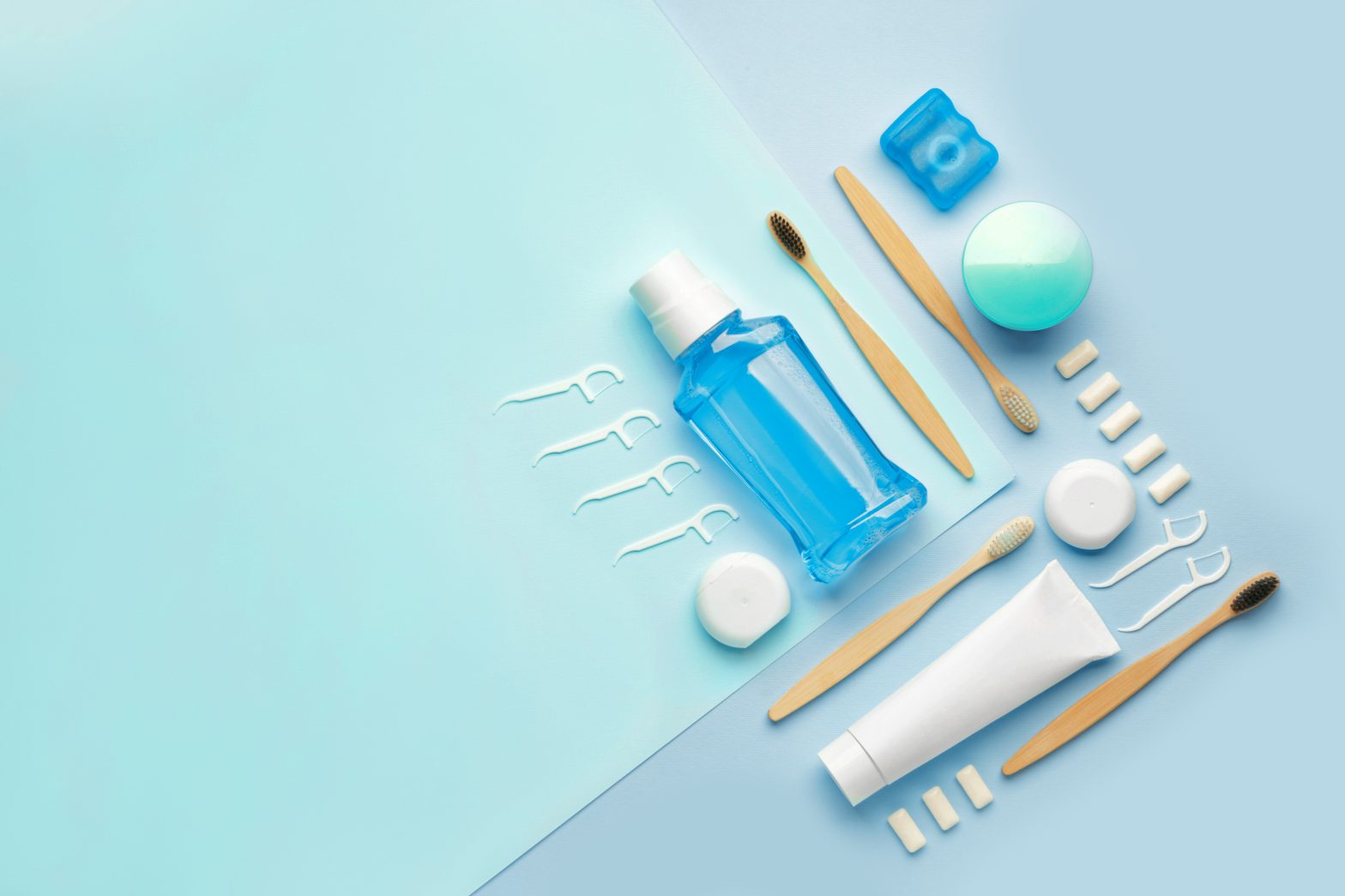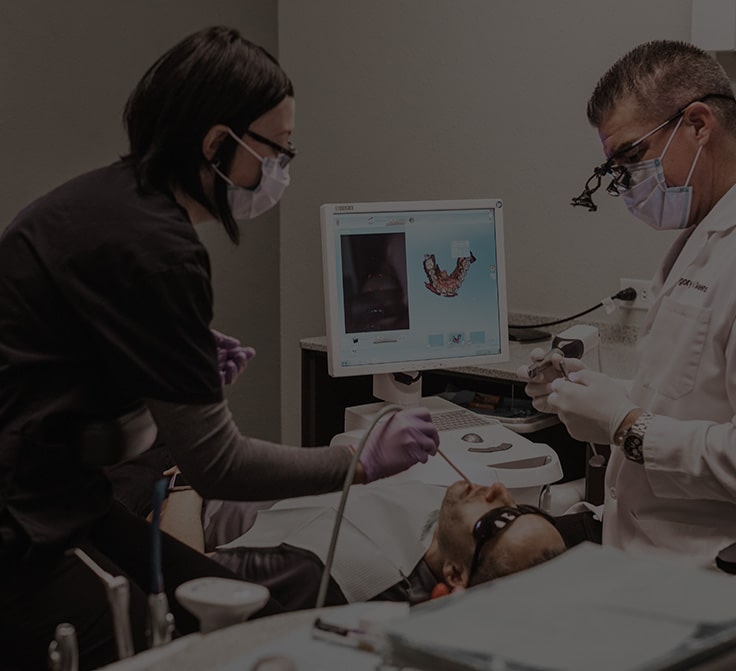
Chances are you’ve had the same oral care routine for years, if not decades. But the ultimate oral hygiene routine is one that adapts as your smile changes (and ages) over time. Here are some extremely important tips for your oral care routine, step by step, to keep your teeth and gums healthy in the years ahead:
Every Oral Care Routine Starts With a Proper Brush Technique
As far as brushing goes, here’s your ideal oral care routine step by step:
- Choose a soft or extra-soft toothbrush.
- Angle the brush toward your gum tissues, where plaque is usually the thickest.
- Make short back-and-forth motions on one or two teeth at a time. Do not scrub back and forth, or you’ll miss many of the curved surfaces.
- Only apply just enough gentle pressure that the gums slightly blanch; nothing more.
- Brush the inside, outside, and chewing surfaces of each teeth.
- Brush for a minimum of two minutes at a time (30 seconds per 1/4 of your mouth.)
- Use a pea-sized amount of fluoride toothpaste each time you brush.
An electric toothbrush is a great option if you struggle with dexterity issues or find you don’t brush as long as you should. Most electric brushes have a built-in timer to ensure you’re cleaning your teeth for at least two minutes.
Your Oral Care Routine Must Include Flossing!
It is important to floss between your teeth using a floss, floss pick or water flosser. A toothbrush physically cannot clean these spaces, which make up approximately 40% of your smile. Floss at least once a day.
- Use approximately 18-24 inches of floss.
- Wrap each end of the floss around your middle fingers, allowing you to use your thumb and index finger for maneuvering the floss throughout the mouth.
- The floss should be wrapped around each tooth in a “C” shape.
- Allow the floss to slip down the side of the tooth under the gumlines.
- Clean up and down each tooth several times.
- To move the floss to the next tooth, lift the floss up and over the gum tissue rather than directly to the side.
When flossing is a challenge or you have deep periodontal pockets around teeth, consider using a water flosser instead. Water flossers reach areas that traditional floss does not.
Drink Plenty of Water Each Day
Did you know that your water intake is an important part of having a healthy smile? Water is a natural cleanser, so it rinses away acids, bacteria, and food debris between meals. It won’t replace brushing and flossing, but it will help cut down on your risk of dental disease. Especially if you’re drinking water instead of sweet tea, diet soda, juice, or sports drinks.
Take Things Up a Notch With Xylitol
Xylitol is a sugar substitute found in certain chewing gums and oral care products that prevents plaque from building up on teeth. If you’re between meals or running errands during the day, consider chewing a piece of gum that’s sweetened with xylitol. Not only will it lower your risk for cavities, but it will also help freshen your breath between brushing and flossing.
The Best Oral Hygiene Routine Always Includes a Checkup
You should always incorporate professional teeth cleanings in your oral hygiene routine, no matter how good you are at brushing and flossing. Plan to schedule an exam and cleaning at least once every six months. During these visits, Dr. Skeens will screen for issues like gum disease, bone loss, and cavities in your teeth. In most cases we can intercept issues early on when they’re still reversible.
Custom Tips to Improve Oral Hygiene
When you visit Encinitas Family Dentistry for your routine exam and cleaning, we’ll offer custom advice and tips to improve oral hygiene as needed. Your oral care routine isn’t the same as everyone else’s is. Dr. Skeens and our hygienists can help pinpoint areas that may benefit from a modified oral care routine or specific tools (like floss threaders or proxy brushes.)
Contact our dentist in Encinitas today to reserve your next checkup!







 LEARN MORE ABOUT OUR GUIDING PRINCIPLES AT ENCINITAS FAMILY DENTISTRY
At our core, Encinitas Dentistry is a dental practice devoted to restoring and enhancing the natural beauty of your smile. How we accomplish that goal is what makes us stand out. We mingle time-tested approaches to oral care with state-of-the-art technology and procedures to deliver beautiful, long-lasting smiles!
LEARN MORE ABOUT OUR GUIDING PRINCIPLES AT ENCINITAS FAMILY DENTISTRY
At our core, Encinitas Dentistry is a dental practice devoted to restoring and enhancing the natural beauty of your smile. How we accomplish that goal is what makes us stand out. We mingle time-tested approaches to oral care with state-of-the-art technology and procedures to deliver beautiful, long-lasting smiles!